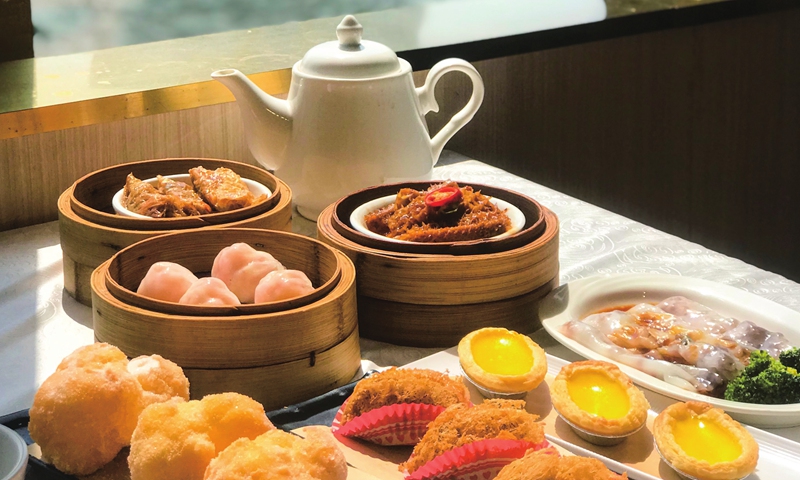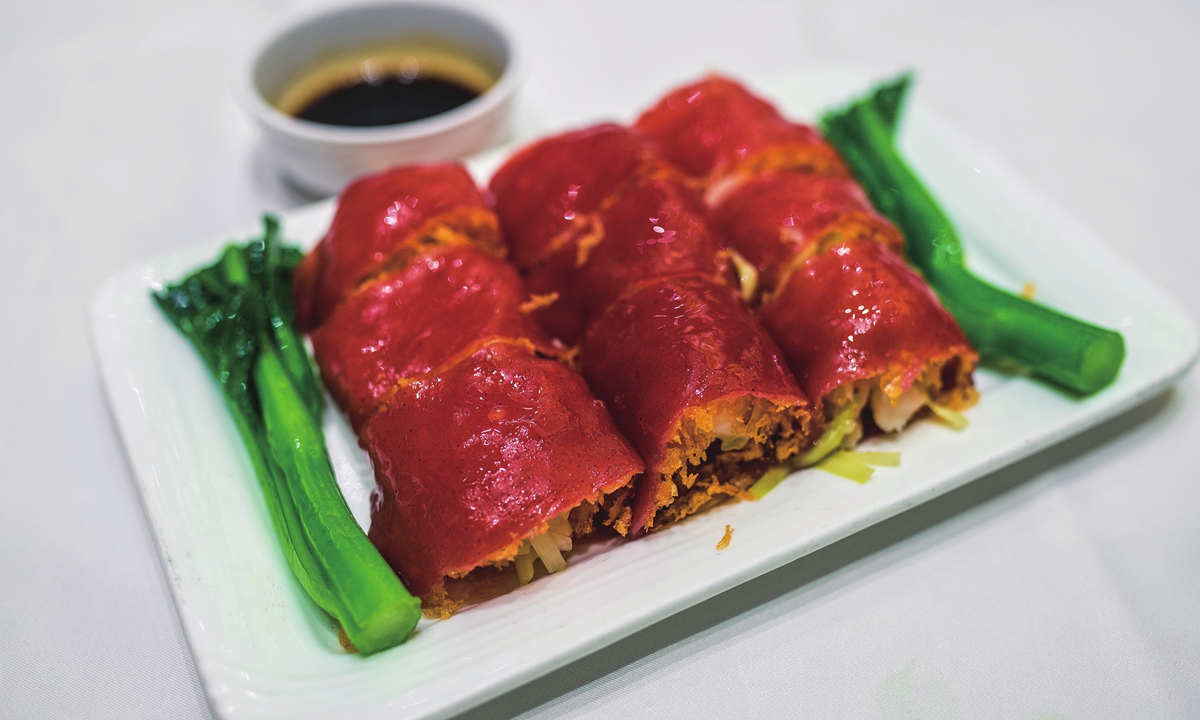ARTS / CULTURE & LEISURE
Yellen's culinary experience spotlights rich flavors

Cantonese dim sum breakfast Photo: VCG

Red rice rolls Photo: VCG
When US Treasury Secretary Janet Yellen visited Beijing in August 2023, her dining experience at the Yunnan restaurant chain Yi Zuo Yi Wang sparked a surge in popularity of the local delicacy jian shou qing, made of a species of mushrooms native to southwest China. This craze led to a rapid sell-out of the dish at restaurants across China.
In early April, during her visit to Guangzhou, capital of South China's Guangdong Province, Yellen made her first culinary stop at the iconic centuries-old Cantonese restaurant, Tao Tao Ju.
The restaurant's menu, which was shared publicly later, showed that Yellen sampled a range of Guangzhou's signature dishes, including century-old roast goose, roast pork or char siu, dry-fried noodles with beef, shrimp dumplings, and the famous double-skin milk dessert.
Media reported that Yellen and her entourage - about 10 people in total - thoroughly enjoyed their meal, which was served in a set menu format and cost around 130 yuan (about $19) per person. "The dishes they ordered were very typical of Cantonese tea culture and Cantonese cuisine," a Tao Tao Ju employee told the media. "They had a great time," he commented.
Food serves as a gateway to exploring the cultural identity of a region. For many visitors to southern China, their initial impressions of Lingnan (the historic name for the Guangdong region) culture are often shaped by the diverse and delectable Cantonese cuisine.
Cantonese cuisine, originating from Guangdong Province, is one of China's traditional Eight Cuisines, renowned for its exquisite cooking techniques, fresh ingredients, and delicate flavors that, emphasize the selection of ingredients.
The cooking methods used aim to preserve the original flavors, while chefs also focus on the aesthetics of the dishes, paying particular attention to color, aroma, taste, and presentation.
2,000 years of history
Dating back over two millennia, the Cantonese cuisine has evolved through centuries of cultural exchanges and culinary innovation.
During the Han Dynasty (206BC-220), under the rule of the Nanyue Kingdom, culinary practices flourished in Lingnan as economic and cultural developments took place.
The subsequent integration of Central Plains culinary techniques and food varieties further enriched the Cantonese cuisine, shaping its unique identity.
At the Han Dynasty tomb site excavated in Guangzhou, various fruit seeds, as well as livestock such as pigs, cows, sheep, chickens, ducks, and geese, were unearthed, along with mud clams, green clams, and small animals like sparrows.
In the Tang and Song dynasties (618-1279), Guangzhou, formerly known as Canton, a thriving international trade port, witnessed a rapid development of its economy and trade. The influx of merchants and traders facilitated cultural exchanges, leading to the fusion of Cantonese cuisine with exotic flavors from distant lands.
By the Qing Dynasty (1644-1911), Guangzhou had become a hub of global trade, attracting merchants from around the world to its bustling Thirteen Factories. Officials who came to Guangzhou would often bring with them chefs from their hometown.
But when the officials left, those chefs would sometimes stay behind and open their own restaurants, adding to the city's gastronomic varieties.
The exchange of goods and people accelerated the convergence of culinary influences, contributing to the cosmopolitan nature of Cantonese cuisine.
Today, Cantonese cuisine continues to thrive, with chefs innovating and refining traditional recipes to meet the evolving tastes and preferences of diners. From traditional establishments to trendy eateries, Cantonese cuisine remains an integral part of people's daily life in Guangzhou, reflecting the city's vibrant culinary scene.
Evolution of Cantonese cuisine
Shunde and Chaozhou, both administered by the Guangdong Province, were awarded the title of the "Creative City of Gastronomy" by UNESCO in 2014 and 2023 respectively.
Cantonese cuisine boasts over 20 distinct cooking methods, including stir-frying, pan-frying, deep-frying, simmering, stewing, and braising. These methods prioritize the control of heat application to enhance the texture, fragrance, flavor, and presentation of each dish, showcasing the culinary mastery of the region.
Classic dishes such as Cantonese roast goose, white-cut chicken, steamed fish, and stir-fried rice noodles showcase the culinary prowess and creativity of Cantonese chefs.
For Cantonese roast goose, the whole goose is prepared by removing wings, feet, and innards. It's then inflated, seasoned with five-spice powder, stitched, scalded, rinsed, glazed with sugar, air-dried, and marinated. Finally, it is hung in a roasting oven or over an open flame, where it is rotated until golden brown. Once cooked, the goose is carved and ready to be served.
The Lingnan region, abundant in natural resources, provides an ideal environment for poultry farming. One of the local specialties, Guangdong white-cut chicken, utilizes fresh local chickens. The chicken is simmered whole in a pot with ginger and green onions until it is fully cooked.
Another beloved Cantonese delicacy is dry-fried noodles with beef, a traditional snack originating from the town of Shahe in Guangzhou. Made with simple ingredients such as rice noodles, beef, and bean sprouts, this dish is both nutritious and delicious.
Double-skin milk, a dessert enjoyed by Yellen during her visit, is a century-old Cantonese delicacy originating from Daliang, Shunde.
Recognized as a "heritage delicacy," double-skin milk pudding is characterized by its silky texture and delicate flavor, leaving a lasting impression on visitors.
Preserving tradition while embracing innovation remains the essence of Cantonese cuisine. From its humble beginning to global recognition, Cantonese cuisine continues to enthrall diners worldwide with its rich flavors and cultural resonance, showcasing the enduring legacy of Cantonese cuisine.

